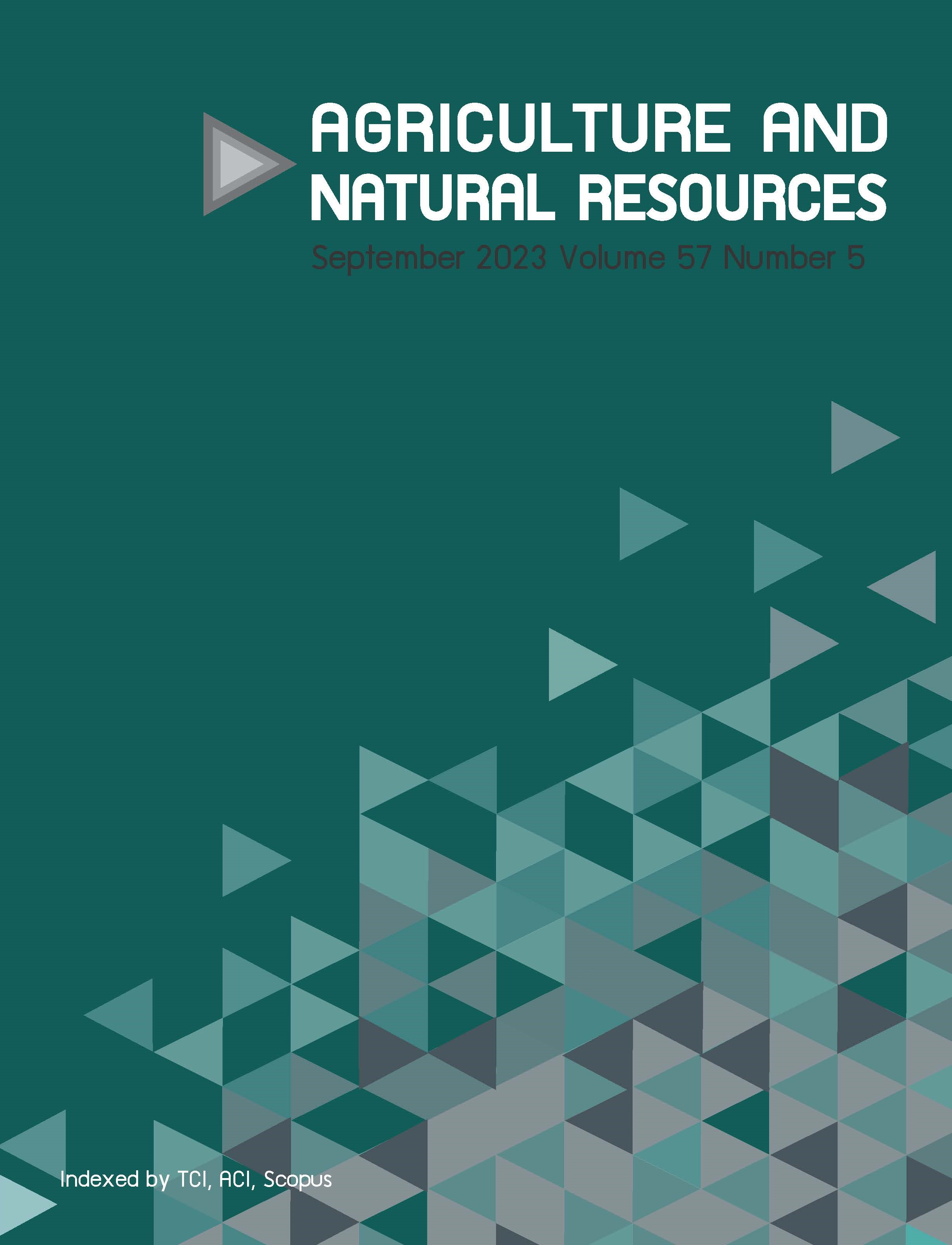Exogenous L-arginine and light-emitting diode light supplementation to enhance growth, quality and antioxidant activity in green perilla microgreens
Keywords:
DPPH, leaf area, light intensity, vitamin CAbstract
Importance of the work: Green perilla is a medicinal plant rich in nutrients and bioactive compounds, especially at the microgreen stage. Enhancing the productivity and quality of green perilla microgreens can upgrade their product value for growers and provide increased variety for consumers regarding healthy products.
Objectives: To investigate the application of light-emitting diode (LED) illumination along with amino acid supplements, such as L-arginine to promote the growth, productivity and quality of green perilla microgreens.
Materials & Methods: The experimental design was a 4×4 factorial completely randomized design with two factors consisting of: 1) L-arginine concentrations (0 mM, 1.25 mM, 2.5 mM or 5 mM); and 2) LED lighting (white [W], red [R], blue [B] or red:blue 70:30 [70R:30B]). The plants were grown under a light intensity of 80 ± 5 μmol/m2/s photosynthetic photon flux density, with an air temperature of 25°C and relative humidity of 65–70%.
Results: The 70R:30B LED lighting promoted not only the best growth (leaf fresh weight and leaf area) but also the best quality (nitrogen, crude protein, vitamin C, total phenolics and total flavonoids contents) of the microgreens. In addition, the white LEDs enhanced total chlorophyll, total carotenoids, nitrogen and crude protein. Furthermore, applying 5.0 mM of L-arginine improved the quality of the green perilla microgreens (total chlorophyll, carotenoids nitrogen and crude protein contents and 2,2-diphenyl-1-picrylhydrazyl scavenging activity). Since there was an interaction between the two factors, the combination of 5 mM L-arginine and the 70R:30B illumination significantly stimulated the plant height, stem fresh weight and total flavonoid contents of the microgreen product.
Main finding: Applying 70R:30B LEDs with 5 mM L-arginine was appropriate for green perilla microgreen production.
Downloads
Published
How to Cite
Issue
Section
License
Copyright (c) 2023 Kasetsart Universityonline 2452-316X print 2468-1458/Copyright © 2022. This is an open access article under the CC BY-NC-ND license (http://creativecommons.org/licenses/by-nc-nd/4.0/),
production and hosting by Kasetsart University of Research and Development Institute on behalf of Kasetsart University.







